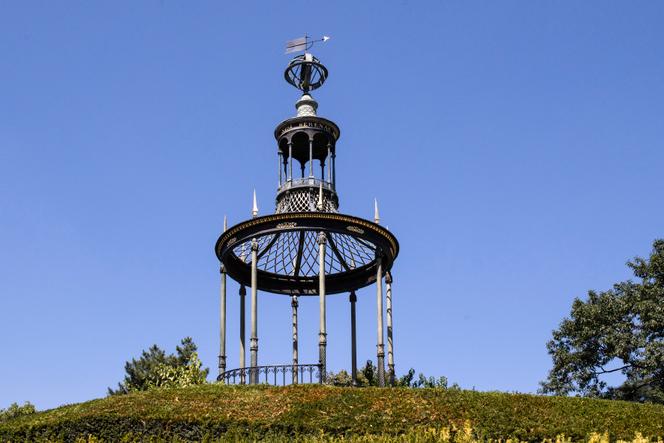

Schoolchildren in the Paris region picnic here at least once, after saluting the Durfort mammoth in the paleontology gallery, a quick sweat in the tropical greenhouse and a visit to the menagerie. But the Jardin des Plantes, which has been open to the public since 1640, has many other nuggets to discover alongside these, which you can explore with the whole family.

What a strange little green hill! There's nothing natural about the hillock overlooking the Jardin des Plantes. It was artificially formed by the accumulation of garbage and rubble before being covered with vines. Walkers can venture between the well-trimmed hedges of the winding path, also known as the labyrinth, in which it's impossible to get lost. The path inevitably leads to the summit and Buffon's gazebo. This small iron structure – the oldest metal monument in Paris – has watched over the garden since 1787. It was built at the request of Georges-Louis Leclerc, Comte de Buffon, the famous 18th-century naturalist and encyclopedist, steward of the King's Garden.
This viewpoint will give your souvenir photos an undeniably bucolic feel. Once you've descended from the labyrinth, you can enjoy a little treasure hunt, trying to find the tomb of naturalist Louis Jean-Marie Daubenton, first director of the Muséum d’histoire naturelle, and three large bronze sculptures engraved with the verses of Saint-John Perse's Nocturne. The 1973 poem begins: "Here they are ripe, these fruits of a shady destiny..."

If your children are fascinated by the secret life of trees, they won't be disappointed as they stroll through the paths. Just below the labyrinth stands the majestic Jussieu cedar from Lebanon. Surrounded by a stone bench where you can rest in its pleasant shade, this tree was the first of its kind to be imported into France, in 1734. This cedar, with its flattened crown and spreading branches – known as a tabular habit – is one of the oldest in the garden.
Another tree not to be missed is Buffon's plane tree, planted in 1785. It stands 27 meters tall and has never been pruned. It can be picked out by its beautiful marbled bark and pale green-grey foliage. Finally, in front of the Paleontology and Comparative Anatomy Gallery, the Stegosaurus statue will catch the eye of younger visitors. Surrounding it is an evocation of the vegetation of the dinosaur era. Among the trees is the Wollemi pine. This long-ignored conifer was only discovered in Australia in 1994. It was planted in France 12 years later.
You have 55.52% of this article left to read. The rest is for subscribers only.
